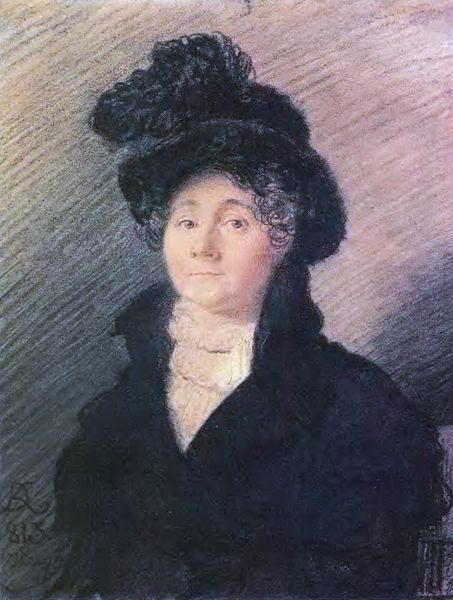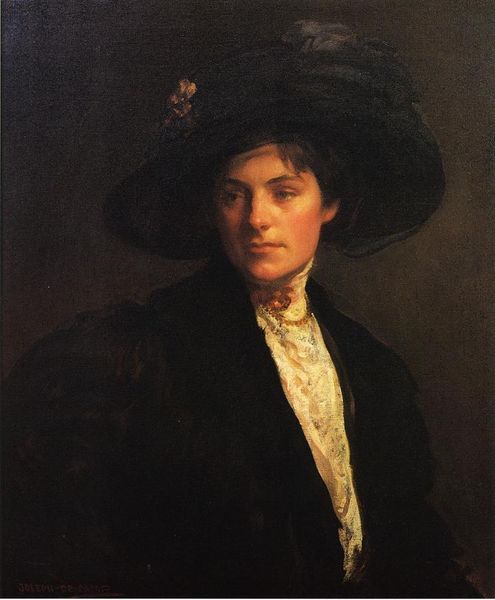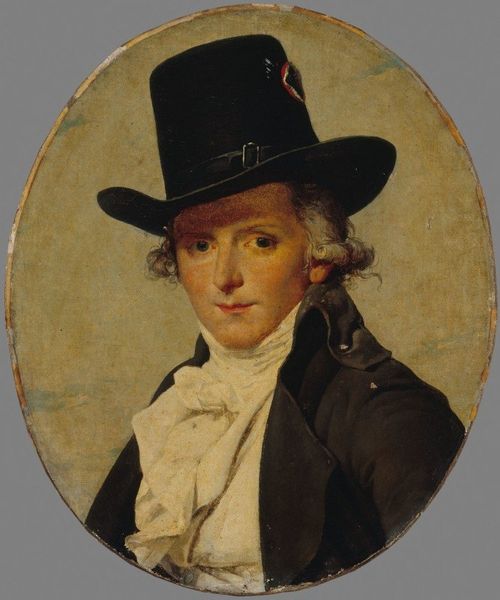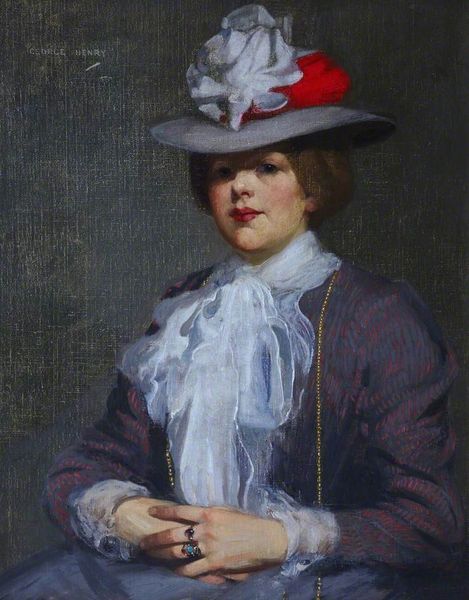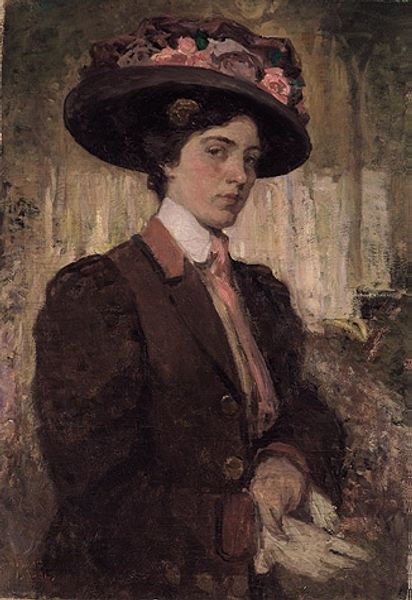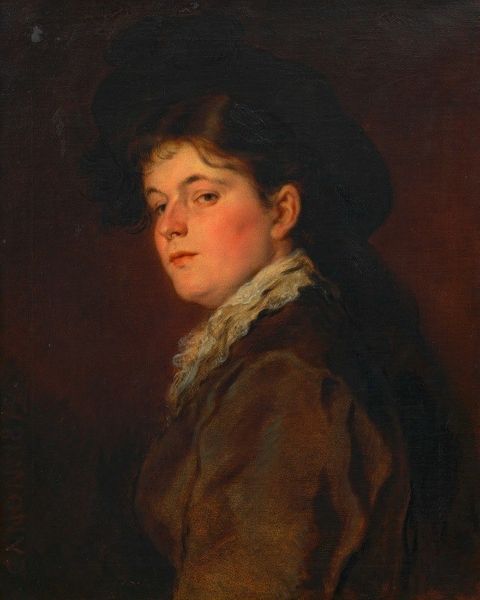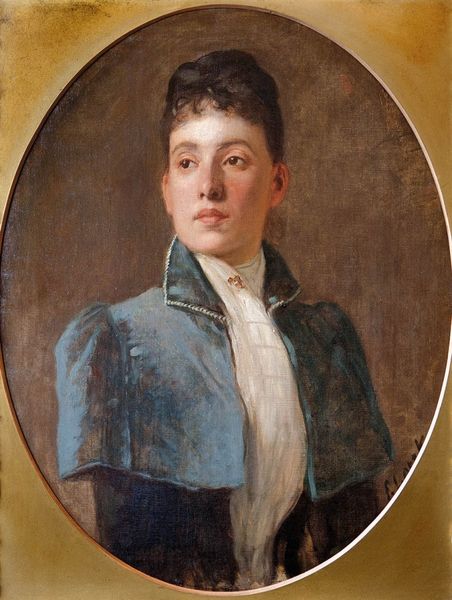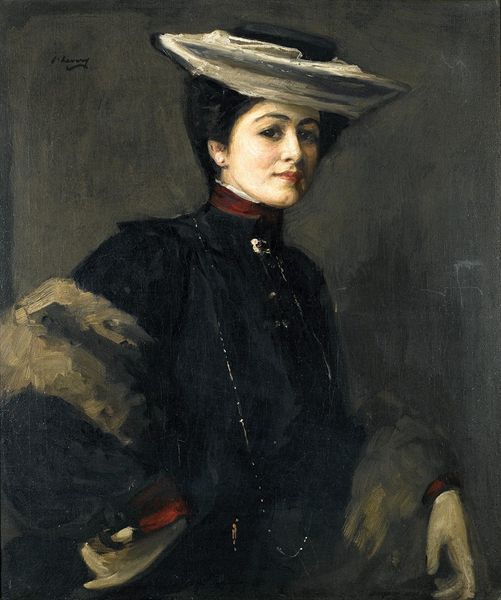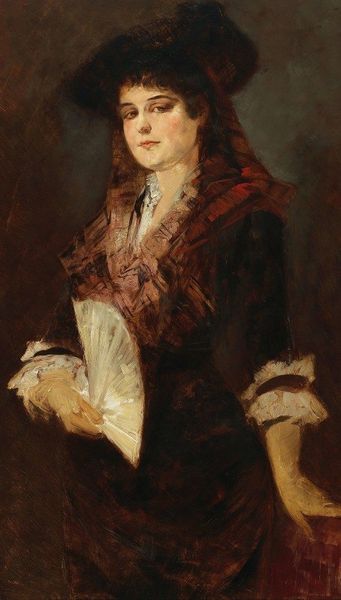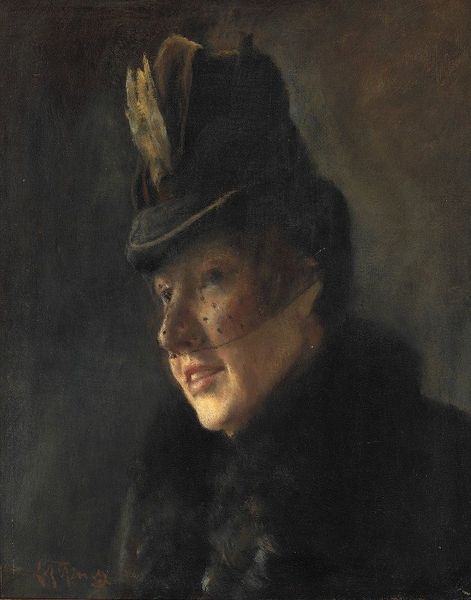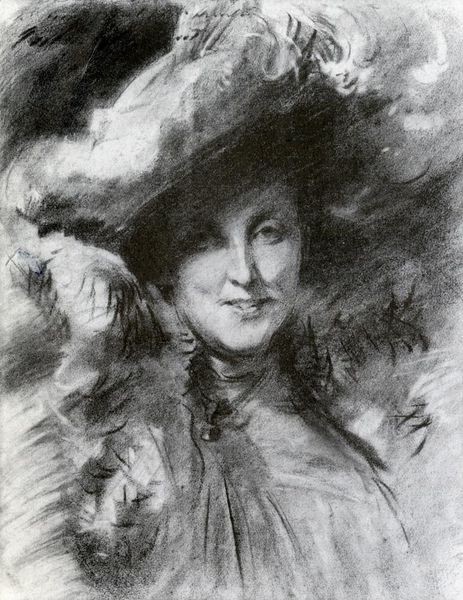
Copyright: Public domain
Curator: Oh, isn't she striking! What's your initial impression of this piece? Editor: I feel an echo of something…melancholy? Sophisticated sadness. The brushstrokes feel so fluid, yet the subject's expression hints at an internal rigidity. It's a curious tension. Curator: That tension certainly adds layers, doesn't it? We're looking at Joseph DeCamp’s “The Blue Veil,” painted in 1913. Oil on canvas, and what a presence! This is part of his venture into what art historians often refer to as "intimate" genre painting. Editor: "Intimate" makes sense, especially given how he positions her. She is not smiling for anyone but is clearly conscious of the viewer's gaze. And her hat is quite something! What a fascinating display of class through fabric! It is a world unto itself! Curator: The hat serves as a sort of halo, a display of both status and mystique. Throughout art history, veils serve as powerful symbols – obscuring yet simultaneously revealing something crucial about the subject. This painting definitely plays on those ideas. It could also symbolize protection. What do you think about this symbolic dimension? Editor: I see it both ways. I believe the veil creates intrigue; it separates her. At the same time, the colors soften what would otherwise be a severe composition, and draw you into her face. But what are we really seeing? A powerful woman? Or is she hiding something? Curator: Perhaps a bit of both! Those "realist" portraits of the early 20th century walk a fine line between external presentation and glimpses into the inner world. DeCamp uses visual cues rooted in realism, sure, but through impressionistic touches he elevates this portrayal beyond the simply literal. Editor: Absolutely, the interplay of light and shadow really does lift this above standard portraiture. She feels somehow both present and distant. Almost haunting in a way, the "blue veil" and all. I appreciate those enigmatic qualities... something about her stillness keeps you searching. Curator: Indeed. It stays with you, doesn’t it? I think that tension we discussed, coupled with DeCamp's subtle impressionistic treatment, makes “The Blue Veil” endlessly compelling, and reveals just a bit about the inner lives of women at the time.
Comments
No comments
Be the first to comment and join the conversation on the ultimate creative platform.
